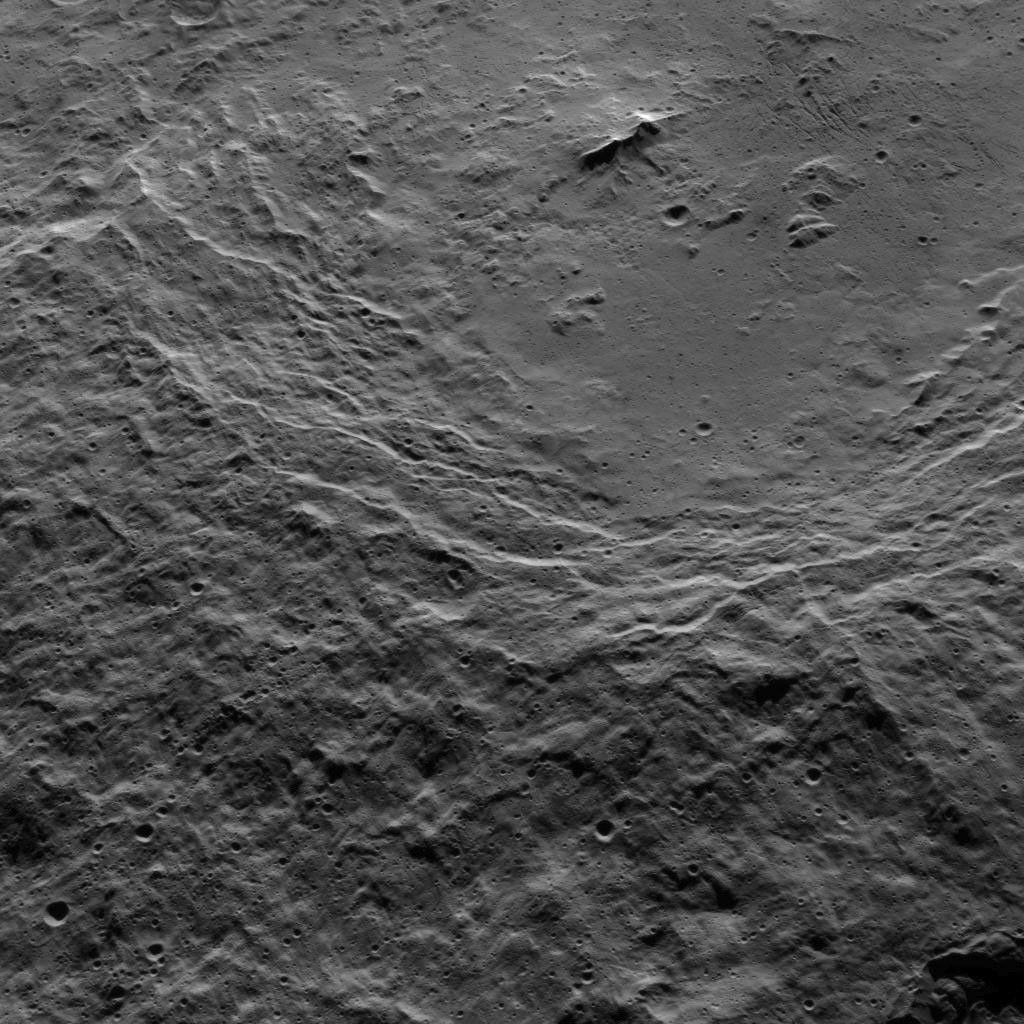Description
This view shows the southwestern rim of 106-mile-wide (170-kilometer-wide) Urvara crater on Ceres. The crater's terraced rim leads down to a generally smooth floor. In the crater's center is a prominent double peak, surrounded by rough terrain to the west and some linear, parallel grooves to the east.
NASA's Dawn spacecraft obtained the image on Oct. 15, 2015, from an altitude of 915 miles (1,470 kilometers). It has a resolution of 450 feet (140 meters) per pixel. North on Ceres is up.
Dawn's mission is managed by JPL for NASA's Science Mission Directorate in Washington. Dawn is a project of the directorate's Discovery Program, managed by NASA's Marshall Space Flight Center in Huntsville, Alabama. UCLA is responsible for overall Dawn mission science. Orbital ATK, Inc., in Dulles, Virginia, designed and built the spacecraft. The German Aerospace Center, the Max Planck Institute for Solar System Research, the Italian Space Agency and the Italian National Astrophysical Institute are international partners on the mission team. For a complete list of acknowledgments, see http://dawn.jpl.nasa.gov/mission.
For more information about the Dawn mission, visit http://dawn.jpl.nasa.gov.
































